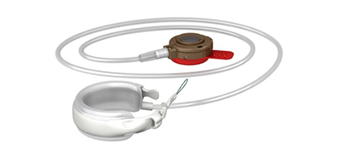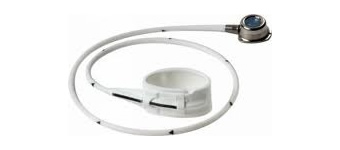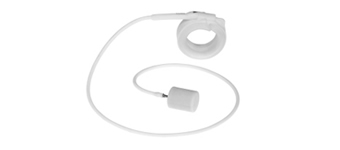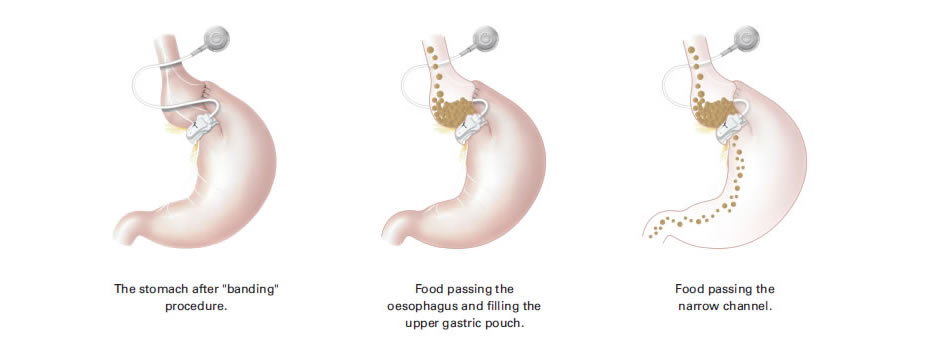What is the Gastric Band?
A gastric band is a silicone balloon placed around the top of the stomach in order to induce weight loss through portion restriction and the induction of satiety in between meals.
In order to adjust the volume of fluid in the band a length of tubing is connected from the balloon to a port which is placed on the muscle under the skin which can be accessed by a medical practitioner to insert or withdraw fluid from the balloon.
Selection of gastric band type is usually by surgeon preference.
 |
|
 |
Lap Band ® (Apollo) Adjustable Gastric Banding System®
|
|
Swedish Adjustable Gastric Band (Obtech/Ethicon Endosurgery)
|
| |
 |
|
 |
MIDband(TM) Gastric Band
|
|
Heliogast Gastric Band
|
For more information on weight loss surgery please call us on 03 9958 3000
History of the Gastric Band
Restrictive bands around the top of the stomach have been used since the late 70s in an attempt to reduce food intake. The first gastric bands were “fixed” bands made out of Marlex mesh or Dacron graft material. These were not adjustable and placed through open surgery. Kuzmak introduced the first adjustable gastric band in 1986 made out of silastic with connection to a port under the skin which could be used to control the size of the gastric band with saline injection. (Ref: Obesity Surgery (2008) 18:121-128)
In Australia the first gastric band was placed laparoscopically (keyhole surgery) in 1992, although this was a non-adjustable variety of gastric band. Belechew placed the first laparoscopic adjustable gastric band in 1993, a system which would evolve into the well known Lap Band. (Ref: Obesity Surgery 2001, 11. 778). The Lap Band system was approved for use by the FDA in the United States in 2001
How Do Gastric Bands Work?
The gastric band works by creating a small pouch of stomach and oesophagus which is easily filled with a modest amount of solid food. The distension of the pouch should give a sensation of fullness or at least curb the desire to eat more. Patients often report feeling less hungry between meals with the band. This may be due to nerve feedback to the brain from the pressure that the gastric band puts onto the stomach wall and the nerves around the stomach.

All gastric bands have an access port which is placed under the skin for easy access by a medical practitioner. A specialised needle is used to avoid damage to the diaphragm of the port. These ports can often be felt by the patient, depending on their individual fat layer and port position. A wide range of various port positions are employed by surgeons. In order to reduce the prominence of the port, it is possible to place a port under the muscle layer where it is slightly more difficult for the practitioner to access but better tolerated by the patient.
How does the surgeon perform a gastric band adjustment?
A gastric band adjustment is performed with a special “non-coring” needle, designed to access the port without damage to the diaphragm of the port. Sometimes you will lie down for the adjustment, sometimes the surgeon will ask you to stand. The surgeon will find the port and steady it between his/her fingers. The needle will be passed through the skin, into the port and usually the position is confirmed by drawing back fluid from the gastric band itself. The correct amount of extra fluid will then be added, if you are having a fill of the band.
Most people have little or no discomfort from the adjustment. Sometimes the port can be difficult to locate or may have been placed under the muscles of the abdominal wall. In these cases there may be a bit more discomfort than normal. In some cases the surgeon may send the patient to the xray department for accurate location of the port for adjustment.
When do I need a gastric band adjustment?
Gastric band fills are performed to tighten the band around the stomach with the aim of further reducing portion size and inducing satiety.
Typically we first consider a fill of the gastric band at about 6 weeks post-surgery. At this time, the stomach has become used to the band and the patient has settled in to consuming a range of solid foods. If the weight is coming off consistently there may be no need for any fill at this time. After this we instigate a series of consultations approximately 4-6 weeks apart to determine the need for further fills. Once 12 months have passed, the right level of restriction should have been reached and it is uncommon to need any more fills.
The right amount of fluid inside the gastric band is different for everyone and different for each type of band. The Lap Band system has two sizes: small (APS) and large (APL). The small Lap Band takes a maximum of 10ml and the large Lap Band 14ml. The most recent Swedish Band takes a maximum of 11ml.
The Access Port & Where to Find it?
All gastric bands have an access port which is placed under the skin for easy access by a medical practitioner. A specialised needle is used to avoid damage to the diaphragm of the port. These ports can often be felt by the patient, depending on their individual fat layer and port position. A wide range of various port positions are employed by surgeons. In order to reduce the prominence of the port, it is possible to place a port under the muscle layer where it is slightly more difficult for the practitioner to access but better tolerated by the patient.

A. Common port positions
B. Cross sectional diagram indicating a sub-fascial or sub-muscular position (very deep)
Patients report differing experiences with the needle access of their port. Many patients feel little or no pain at all during port adjustment. Others are particularly sensitive to the needle, particularly if the port is hard to find. Sometimes ports can flip or migrate making adjustments difficult or impossible. Xray or ultrasound guidance can sometimes be used to access ports which are particularly troublesome.
The access port for the gastric band is found under the skin, usually in the upper abdomen. In most cases it will be firmly attached to the underlying muscle layers.
There are a wide range of surgeon preferences for port placement.
Your port could be right in the middle of the upper abdomen, or off to the left or right.
Occasionally surgeons place the port underneath the abdominal muscles in which case it will be very difficult for you to feel.
All you need to know about Gastric Banding – short version (left), comprehensive (right)
Call (03) 9958 3000 for more information on weight loss surgery or Contact Us by clicking here.